People and Personalities of Khammam District
People and Personalities of Khammam District
The big stories often make the headlines of our historical narratives, but history is not only about the landmark events - it finds shape and character in the myriad events that led up to a flashpoint of change. An attempt to discover and document stories of people, events, and places linked to the freedom struggle of India at the micro level of the district has led to the creation of a Digital District Repository. Stories in this section can be broadly classified under - People & Personalities.
Keshava Rao Jamlapuram
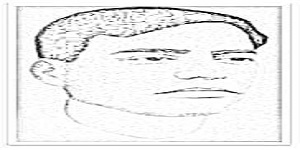 Keshava Rao Jamlapuram, born in 1908, belonged to the Khammam district of the state of Telangana. He was a freedom fighter, agriculturist, and Congress leader.
Keshava Rao Jamlapuram, born in 1908, belonged to the Khammam district of the state of Telangana. He was a freedom fighter, agriculturist, and Congress leader.
Telangana, then a part of Andhra Pradesh, was undergoing a wave of nationalism since the Non-cooperation movement. The Andhra Socialist Party had been working on the ground level to persuade people towards demanding independence for their country. Rao was influenced by this ongoing movement in Andhra. He resigned from his job as a clerk in the office of the District Collector of Hyderabad and became a part of the Andhra Pradesh Congress. He worked for the spread of the Library Movement in the state and kept fighting for the removal of untouchability. He started a Satyagraha in 1938 and was detained for it and was imprisoned in the Central Jail of Warangal until 1939. When the Quit India Movement was launched, he took active participation in it and again courted imprisonment. He also fought for the freedom of the Hyderabad state from the oppressive rule of the Nizam and his allies, the Razakars.
Later, Rao was nominated as a member of the Constituent Assembly by the President of India. He died in 1953.
Kolipaka Krishna Rao
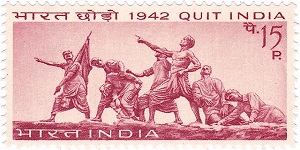 Kolipaka Krishna Rao was a freedom fighter and a cultivator who belonged to Khammam district of Telangana.
Kolipaka Krishna Rao was a freedom fighter and a cultivator who belonged to Khammam district of Telangana.
Telangana, then a part of Andhra Pradesh, was undergoing a wave of nationalism since the Non-Cooperation Movement. Rao participated in the Non-Cooperation Movement in 1921. The participation of people from Telangana gradually increased tremendously towards the Civil Disobedience Movement in 1930. He was also a participant in that movement. During the Quit India Movement, the local leaders and people were organizing protests under the radar, as the Congress leaders had been detained right after the Movement started. The Andhra Socialist Party had been working on the ground level to persuade people to demand independence for their country. All such factors ensured massive people participation, and many of them courted arrests. He also became a part of the Quit India Movement and was imprisoned for it.
His contribution towards the freedom struggle, madea mark in the history of India. People of telangana were inspired by him and also gave their best efforts during the freedom struggle against the colonial rule.
P.Rangaiah Naidu
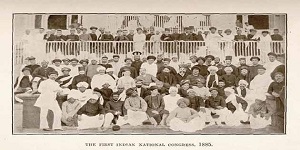 Rangaiah Naidu was born in the Khammam district of Tamil Nadu which was formerly called the Madras Presidency.
Rangaiah Naidu was born in the Khammam district of Tamil Nadu which was formerly called the Madras Presidency.
Naidu was an independence activist and a lawyer by profession. He became an important part of the Indian National Congress in its initial days. Congress was founded by people who were associated with different Presidencies like Madras, Bombay and Calcutta. Naidu was an important member of Madras Mahajan Sabha which is considered to be a predecessor of INC as it was one year older than INC. Their ideologies and issues were similar which is why when INC was banned for its anti-state activities, Sabha continued the fight for freedom. He was elected as the first President of the Sabha when it was founded in 1884. He demanded more representation of Indians in the administration and was elected as the member of Madras Legislative Council. He was a participant of the first session of Indian National Congress that was held in 1885.
He was later nominated to Madras High Court.
Mohammad Rajab Ali
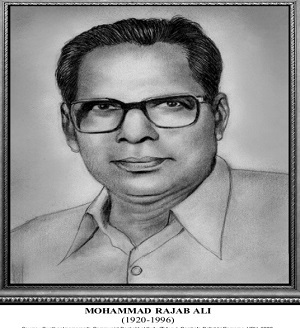 Mohammad Rajab Ali was born on 1st January 1920, in the village of Papatapalli in Khammam District, Andhra Pradesh. He played a significant role in the Indian National Movement and spearheaded efforts to integrate the Nizam state with the Indian Union. Aminabi and Mahaboob Ali were his parents. He received his education up to the ninth grade in his hometown and later served as a teacher at a government school in Utkur.
Mohammad Rajab Ali was born on 1st January 1920, in the village of Papatapalli in Khammam District, Andhra Pradesh. He played a significant role in the Indian National Movement and spearheaded efforts to integrate the Nizam state with the Indian Union. Aminabi and Mahaboob Ali were his parents. He received his education up to the ninth grade in his hometown and later served as a teacher at a government school in Utkur.
Following his tenure as a Telugu-Urdu translator in the Government Press of Hyderabad State, Mohammad Rajab Ali returned to his hometown and assumed the position of village karanam, responsible for maintaining tax records. Rajab Ali had independent ideas from a young age, which drew him to the Andhra Mahasabha's programs. At the age of 24, he became a full-fledged member of the Andhra Mahasabha. In 1944, he began participating in the National Movement activities in response to the Indian National Congress' call. The British Government arrested and detained him for three months in Warangal jail.
In 1947, Mohammad Rajab Ali took an active role in leading the movement to integrate the Nizam state with the Indian Union. He subsequently became a member of the Communist Party of India, which led to his arrest and imprisonment for about three years and three months in various jails. Later, he was once again detained by the Indian Union's army for his involvement in the Telangana farmers' armed struggle, during which his colleagues were killed fighting for the rights of farmers and labourers in independent India. In 1967, he was elected as a candidate of the Communist Party of India (Marxist) to the Assembly from the Khammam constituency. In 1971, he led the historic hunger march in the Khammam district.
In 1972, Mohammad Rajab Ali emerged victorious in the general elections for the Andhra Pradesh Legislative Assembly and served as a Member of the Legislative Assembly. However, he was defeated in the 1978 elections. He went on to win the elections again in 1983, 1985, 1989, and 1994, representing the Sujatanagar Constituency of Khammam district. He served as a role model to legislators.
He passed away on 1st March 1996.
Ayithem Venkateswarlu
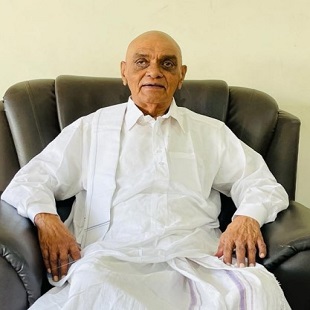 Ayithem Venkateswarlu was born in 1933 at Madhira taluq of Khammam district. He was an active member of the Indian National Congress. He played a key role in the freedom movement. He walked along with Jamalapuram Keshavarao, Bommakanti Satyanarayana, and Ramchandra Rao who were also freedom fighters from this region. They are very active in making people gather and participate in several campaigns for freedom. He also took an active part in Quit India and Join India Movements. He has a memorable association with Mahatma Gandhiji who spent a whole day in Khammam during the freedom movement. He was a contemporary of former chief minister Jalagam Vengal Rao. He worked as Dalam commander in the Telangana armed struggle against the tyranny of Nizam and also fought against the atrocities of Razakars. Risking his life, he participated in a ‘guerilla fight’ against the Razakars. For his contribution to the freedom movement, he was felicitated by the President of India, Sh Pranab Mukherjee at Rashtrapati Bhavan in New Delhi on 9 August 2016 as a part of the 70th-anniversary celebration of the Indian Freedom Movement. He was one of the 10 freedom fighters selected from Telangana for great honor.
Ayithem Venkateswarlu was born in 1933 at Madhira taluq of Khammam district. He was an active member of the Indian National Congress. He played a key role in the freedom movement. He walked along with Jamalapuram Keshavarao, Bommakanti Satyanarayana, and Ramchandra Rao who were also freedom fighters from this region. They are very active in making people gather and participate in several campaigns for freedom. He also took an active part in Quit India and Join India Movements. He has a memorable association with Mahatma Gandhiji who spent a whole day in Khammam during the freedom movement. He was a contemporary of former chief minister Jalagam Vengal Rao. He worked as Dalam commander in the Telangana armed struggle against the tyranny of Nizam and also fought against the atrocities of Razakars. Risking his life, he participated in a ‘guerilla fight’ against the Razakars. For his contribution to the freedom movement, he was felicitated by the President of India, Sh Pranab Mukherjee at Rashtrapati Bhavan in New Delhi on 9 August 2016 as a part of the 70th-anniversary celebration of the Indian Freedom Movement. He was one of the 10 freedom fighters selected from Telangana for great honor.
Khammam district was formed on 1 October 1953 by carving out some portion of five taluks of the Warangal District i.e Khammam, Madhira, Yellandu, Burgampadu, and Palwancha (now Kothagudem) to form a new district as ‘Khammam’.
Shoebullah Khan
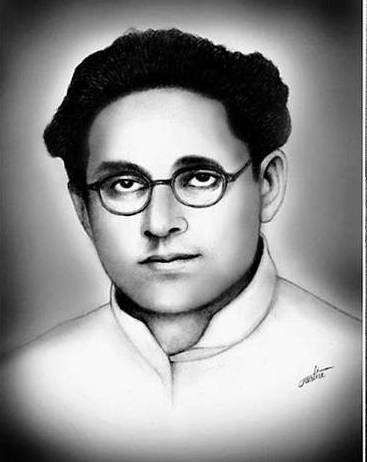 Shoebullah Khan was born on 17 October 1900 at Subbuleru in Khammam District. His father was in the police department. He named his son Shoebullah being impressed with the glimpse of Mahatma Gandhi. He was the editor of an Urdu Newspaper Imroze. He was a great scholar who raised his voice against the oppressive rule of Nizam VII. He was the editor of the Urdu daily Imroze. In his paper, he criticized the anti-people activities of Nizam and his officials. He was also warned by Nizam’s men to stop these activities. However, on the night of 22 August 1948, when Shoebullah was returning from his office, he was shot dead by the Razakars and his hands were cut off.
Shoebullah Khan was born on 17 October 1900 at Subbuleru in Khammam District. His father was in the police department. He named his son Shoebullah being impressed with the glimpse of Mahatma Gandhi. He was the editor of an Urdu Newspaper Imroze. He was a great scholar who raised his voice against the oppressive rule of Nizam VII. He was the editor of the Urdu daily Imroze. In his paper, he criticized the anti-people activities of Nizam and his officials. He was also warned by Nizam’s men to stop these activities. However, on the night of 22 August 1948, when Shoebullah was returning from his office, he was shot dead by the Razakars and his hands were cut off.
The nation salutes this martyr for his sacrifice.
Jamalapuram Keshava Rao
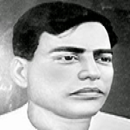 Jamalapuram Keshava Rao was popularly called by his contemporary friends and followers as “Sardar of Hyderabad”. He was born on 2 September 1908 at Yerrupalem, Madira taluk of Khammam district. He studied up to Intermediate, later joined the Government service as a clerk in the District Collectors’ office. Being influenced by Gandhiji’s ideology he joined Indian National Congress and took an active part in the freedom movement. In the year 1938, he participated in the Satyagraha against Nizam in Hyderabad State. He was arrested and imprisoned for one year. Again he took an active part in the Quit India Movement and was arrested. He was also an active member of Andhra Mahasabha. He was very active in the Join India Movement (1947-48). He was a true Gandhian follower who worked for the eradication of untouchability. He died in March 1953.
Jamalapuram Keshava Rao was popularly called by his contemporary friends and followers as “Sardar of Hyderabad”. He was born on 2 September 1908 at Yerrupalem, Madira taluk of Khammam district. He studied up to Intermediate, later joined the Government service as a clerk in the District Collectors’ office. Being influenced by Gandhiji’s ideology he joined Indian National Congress and took an active part in the freedom movement. In the year 1938, he participated in the Satyagraha against Nizam in Hyderabad State. He was arrested and imprisoned for one year. Again he took an active part in the Quit India Movement and was arrested. He was also an active member of Andhra Mahasabha. He was very active in the Join India Movement (1947-48). He was a true Gandhian follower who worked for the eradication of untouchability. He died in March 1953.
Source :
- Indian Culture Portal
- Somisetty Sarala, Scholar, CCRT
- B Rahul, IAS 2020 (Telangana)
- Sarojini Regani, Shivaji Press, Secunderabad, Vol. I, 1978, pp.521-522
- Azadi Ka Amrit Mahotsav
Last Modified : 8/9/2023
This topic provides information about People and P...
Provides information related to People and Persona...
This topic provides information about People and P...
This topic Provides information about Personalitie...
